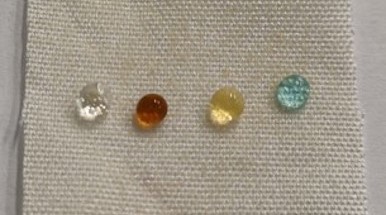
In view of the imminent restrictive regulations on per- and polyfluoroalkyl substances (PFAS) by the European Union, it is necessary to search for less impactful materials for the hydrophobization of surfaces. Polysaccharides, and especially chitosan, are interesting alternative materials because they are easily filmable and modifiable in their functionality, as well as non-toxic and biodegradable.
Researchers from the Surface Engineering and Fluid Interfaces (SEFI Lab) laboratory at the Department of Materials Science of the University of Milano-Bicocca, in a research led by Dr. Irene Tagliaro and Prof. Carlo Antonini and in collaboration with Massimiliano Mariani, Raziyeh Akbari, Marco Contardi, Maria Summa, Francesco Saliu and Roberto Nisticò have demonstrated the possibility of using non-toxic and sustainable biopolymers modified to create coatings on fabrics.
In the study "PFAS-free superhydrophobic chitosan coating for fabrics" (DOI: 10.1016/j.carbpol.2024.121981), published in the scientific journal Carbohydrate Polymers (Impact Factor 11.2, 2022 Journal Impact Factor, Journal Citation Reports (Clarivate Analytics, 2023)), the application of a superhydrophobic chitosan-based coating on hydrophobic and hydrophilic fabrics (polyester and cellulose acetate) was studied, through a solvent-free thermal treatment capable of ensuring both the adhesion of the coating and the achievement of surface roughness, demonstrating that the hydrophobicity of the fabric is imparted by a combination of nano- and micro-roughness and chemical composition of the coating. The durability of the coating and its degradation were studied to define the compounds released as a result of thermal degradation. The biodegradability and biocompatibility on two cell lines were demonstrated, confirming that the coating is safe for skin contact.
The ambition of this study is to pave the way for the study of PFAS-free superhydrophobic fabrics with limited impact on health and the environment and in the future to make the synthesis process more sustainable.